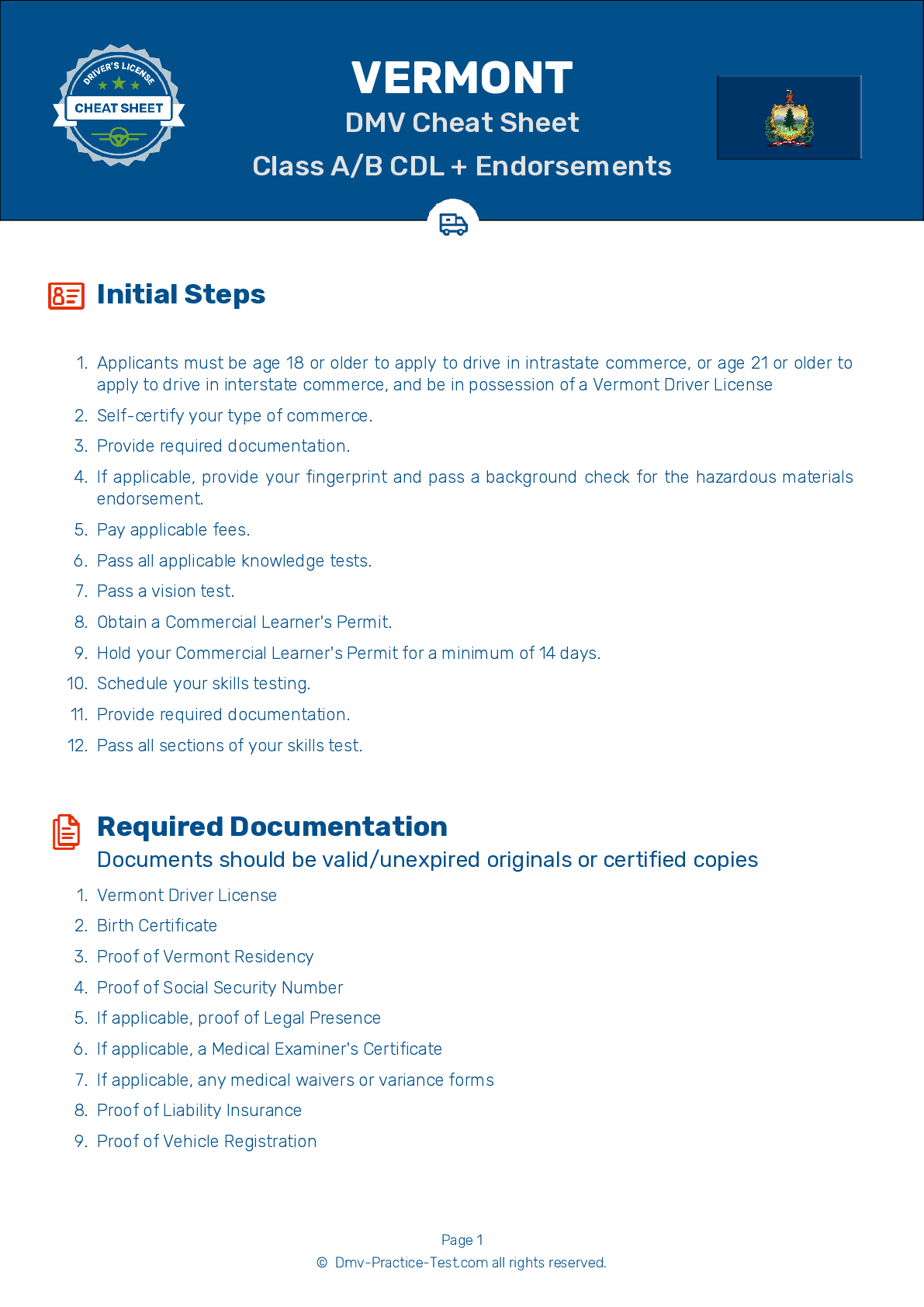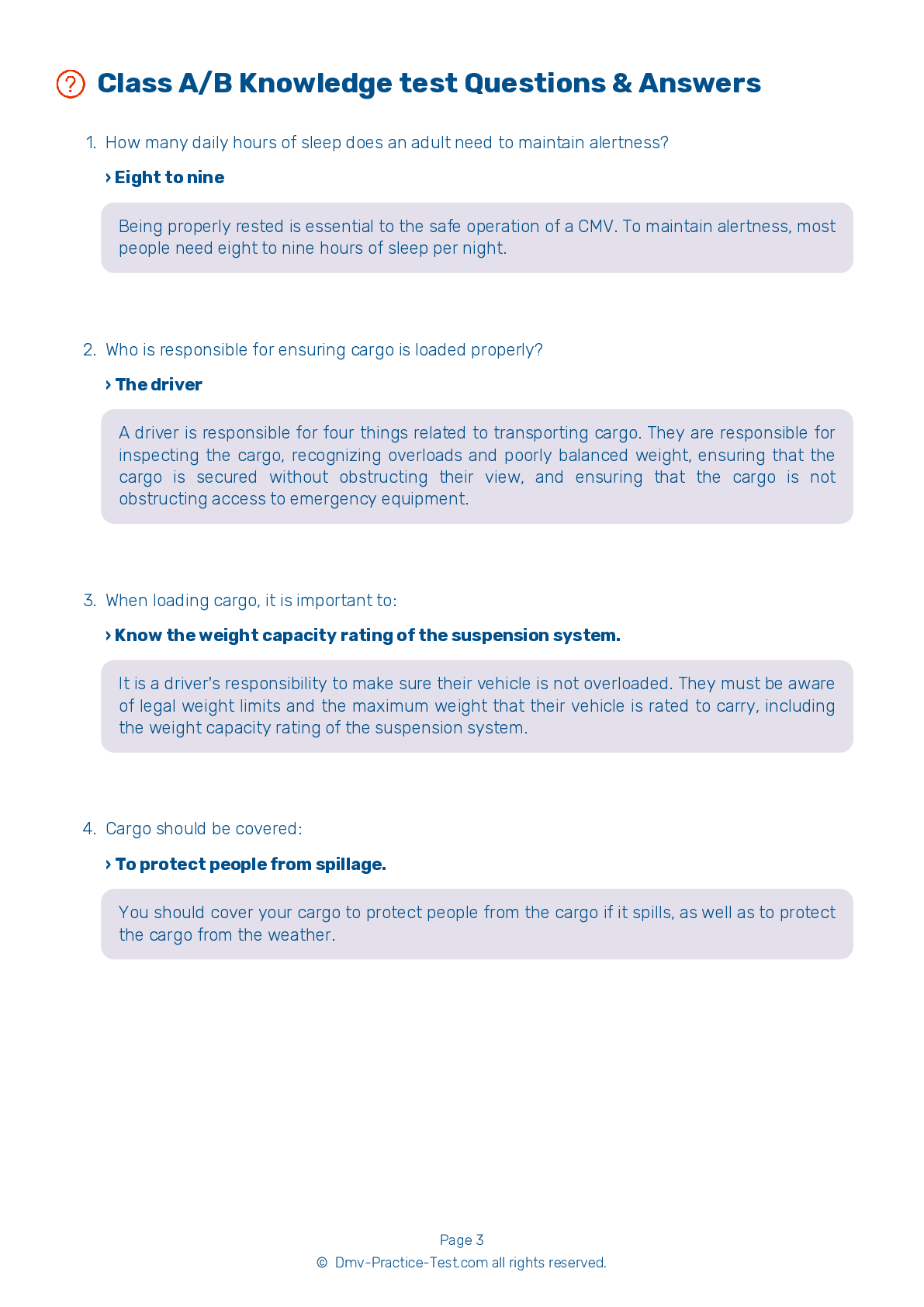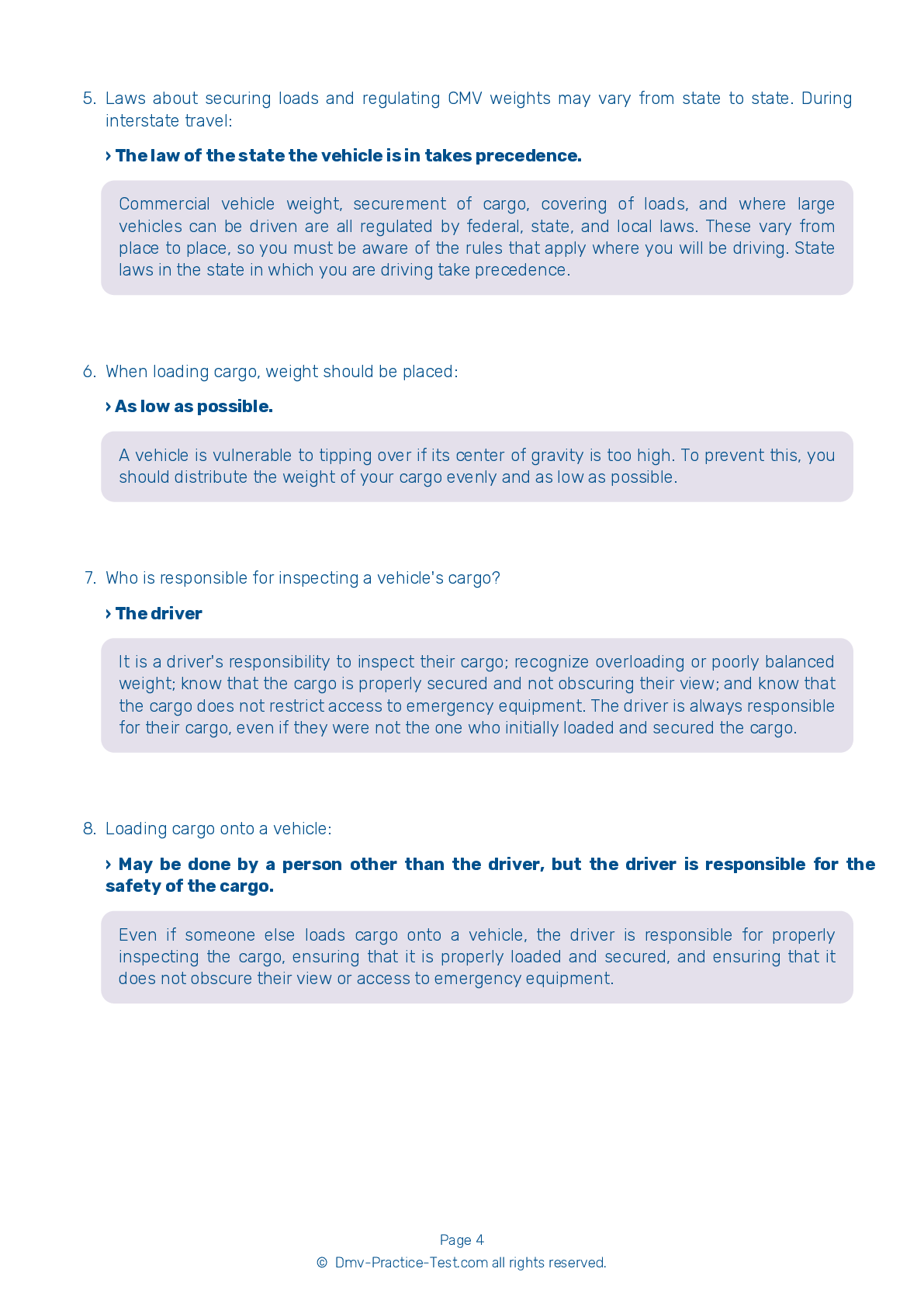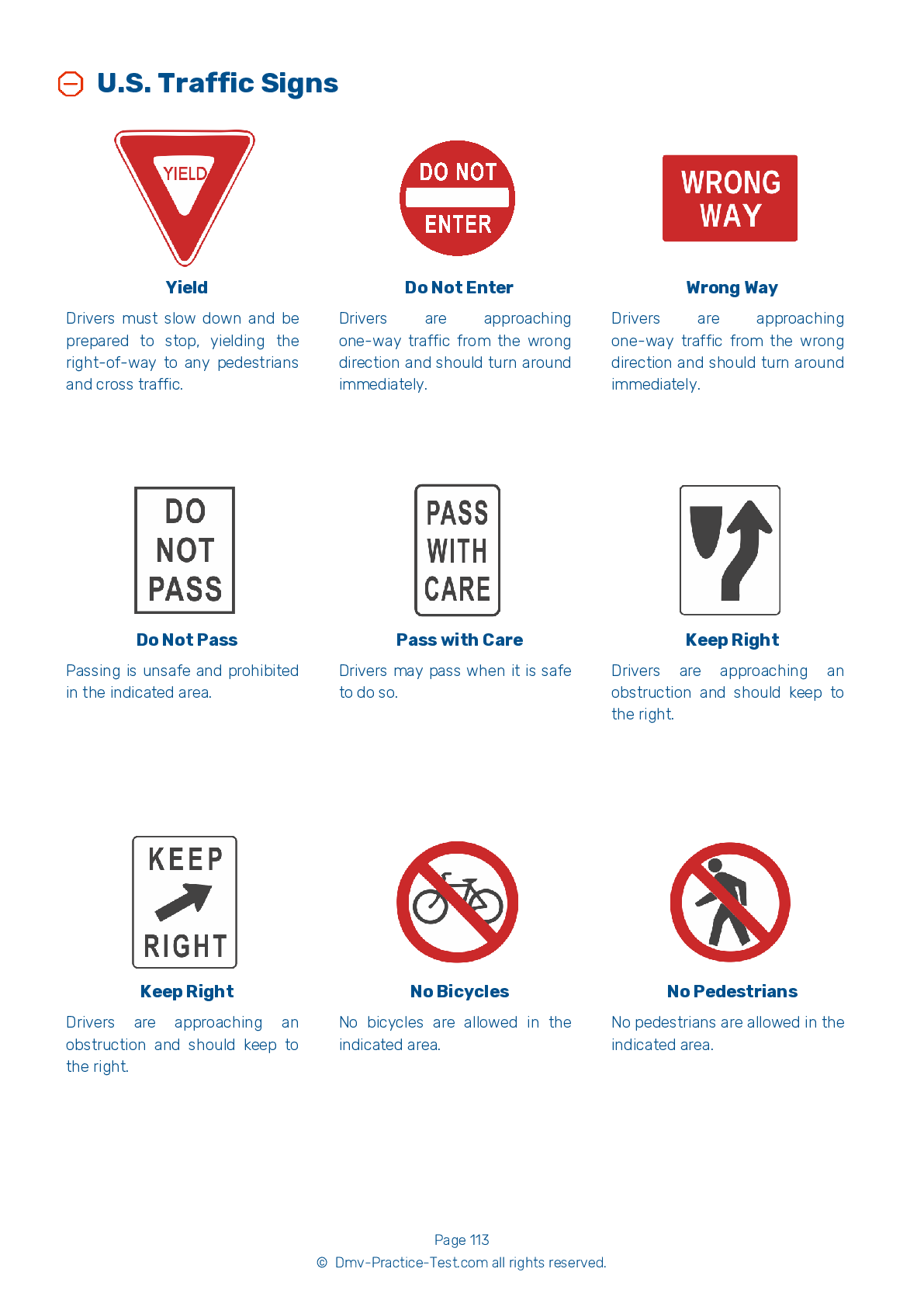Combination Vehicles Practice Test | Vermont 2025 #1 Page 2 of 3
Train for FREE online with our Vermont CDL combination vehicle test. The official exam test consists of several obligatory parts, with all of them checking your knowledge of different blocks of road rules. If you need to obtain a VT combination license in 2025, practice as much as possible. Free sample tests published on our website will help you check and improve your knowledge and boost your grades. Please bear in mind that DMV requirements for issuing a combination license may vary from state to state.
8 . When backing up your tractor while coupling it to a trailer, the trailer brakes should be:
Correctly following the steps to couple and uncouple trailers is vital to safely operating a combination vehicle. Before backing your tractor under the trailer while coupling, make sure your trailer brakes are locked.
9 . Rearward amplification refers to:
Vehicles with trailers are vulnerable to rollover due to the "crack-the-whip" effect, which is caused by rearward amplification.
10 . When the wheels of a trailer lock up:
A trailer may swing out and strike other vehicles if its wheels lock up. This is especially likely with lightly-loaded trailers.
11 . Rearward amplification refers to:
The "crack-the-whip" effect is a result of rearward amplification. If not properly handled, a trailer can tip over due to rearward amplification.
12 . The tractor protection valve:
A tractor protection valve keeps air in a tractor or truck air brake system should the trailer break away or develop a bad leak. The valve will close automatically if the pressure drops to an unsafe level.
13 . When coupling, you should:
When coupling air brake hoses, you should make sure the proper pairs of gland hands are connected. They are sometimes color-coded to help drivers avoid mistakes. Typically, blue is used for service lines and red is used for emergency lines.
14 . Which of the following will not help prevent a rig from rolling over?
To help prevent a rig from rolling over, you should keep the weight of the cargo as close to the ground as possible when loading. You should also drive slowly around turns.
See the exact questions that will be on the 2025 Vermont DMV exam.
99.2% of people who use the cheat sheet pass the FIRST TIME
Lillian MCcranie explains how our CDL study guide was helpful in passing the exam and recommends it to everyone.
Cameron tells us how he purchased the CDL exam, and found it to be a useful tool which helped him pass the exam and find a job.



